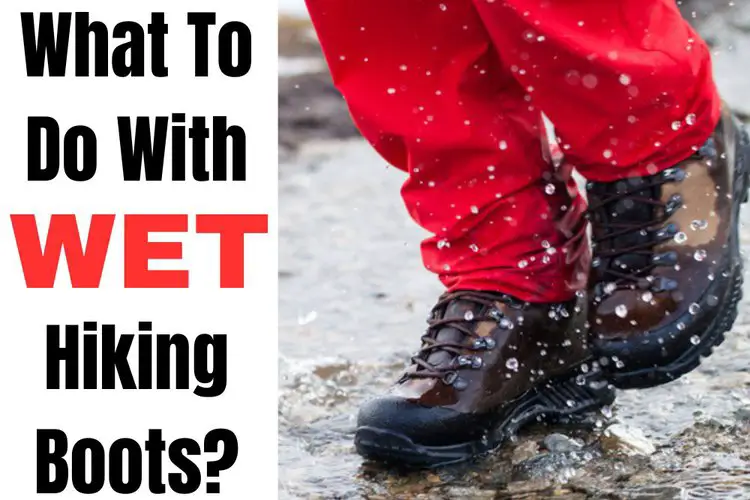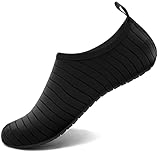Hiking is a great way to explore the outdoors and stay active, but it can be challenging when your hiking boots get wet. Wet hiking boots are very uncomfortable when on the trail and can even lead to blisters and other foot problems.
In this article, we will discuss what to do with wet hiking boots both at home and on the trail, as well as the benefits of proper maintenance.
Key takeaways:
- Dry wet hiking boots as soon as possible to prevent discomfort, blisters, and deterioration. Use moisture-wicking materials, boot trees, or warm air to dry them properly.
- Choose a dry and well-ventilated area to dry your boots on the trail. Avoid enclosed spaces and direct heat sources to prevent irreversible damage.
- Store them properly in a cool, dry place, and use a leather conditioner to keep the leather supple and hydrated.
Contents
1. Dry Your Boots as Soon as Possible
The first thing you should do when you realize your hiking boots get wet is to dry them as soon as possible. Moisture can cause the boots to become heavy, make them smell bad, and even cause them to deteriorate over time.
Here’s how you deal with wet hiking boots while on the trail or at home:
On the Trail
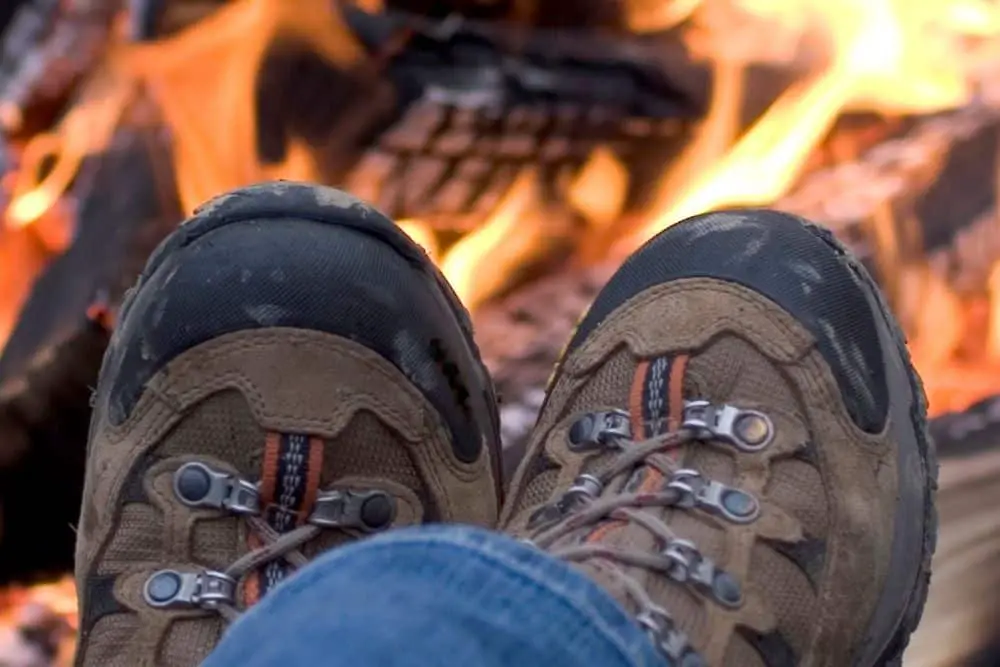
When hiking, your boots can get wet due to rain, snow, or crossing streams.
To dry them quickly, you should stuff your boots with moisture-wicking materials, such as newspapers or a rag. Or you can also place the boots in a sunny area or near a campfire, hot rock, or other heat sources.
To learn more about these methods and why they work, check out our article on drying wet hiking boots while on the trail.
At Home
In your home, you have more options to dry your wet hiking boots quickly and safely. One method is to use boot trees, which help maintain the shape of your boots and absorb moisture.
Other tools to use include a boot dryer or a table fan, they can circulate warm air to dry your boots.
- FORCED WARM AIR - dryer works on four garments simultaneously; boots, gloves, helmets, hats and more
- WHISPER QUIET - rotary blower with a 3-hour timer; heats to 105°F/40.5°C will not harm any liners...
- KEEPS SHOES FRESH - wet, soggy footwear is a breeding ground for unwanted odors. Dries most items in...
Last update on 2023-11-10 / Affiliate links / Images from Amazon Product Advertising API
For more unconventional methods, try using household powder, rice, bath towels, or a hairdryer.
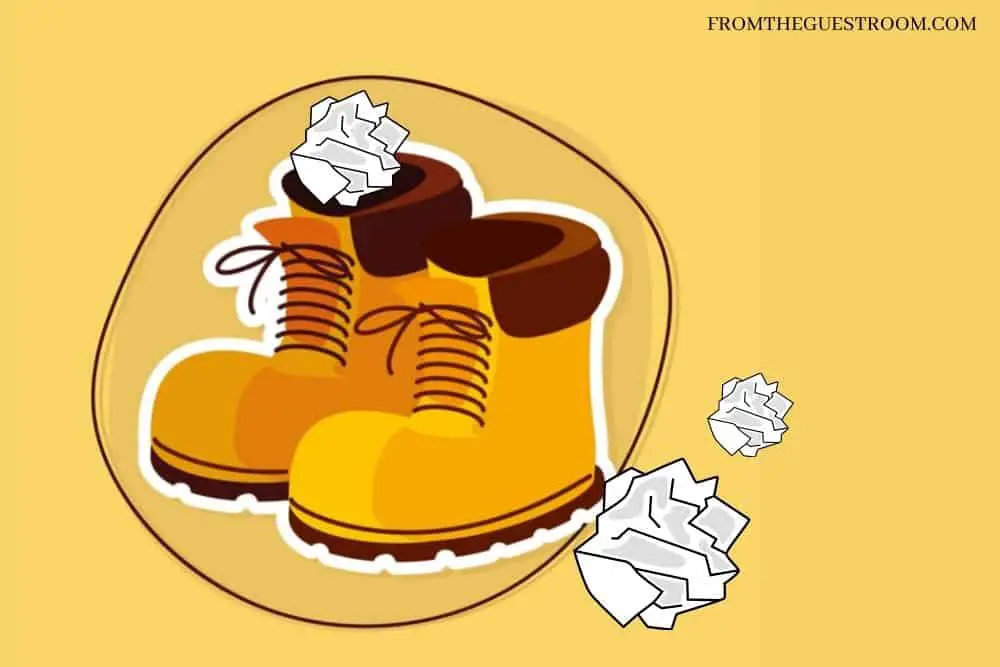
Remember that no matter which method you choose, it’s important to let your hiking boots dry completely before wearing them again. This will help prevent discomfort, blisters, and other foot-related issues that can arise from wet boots.
To have a full guide, check out our article on how to dry your wet hiking boots for more information and tips.
2. Choose the Right Place to Dry Your Boots (on the Trail)
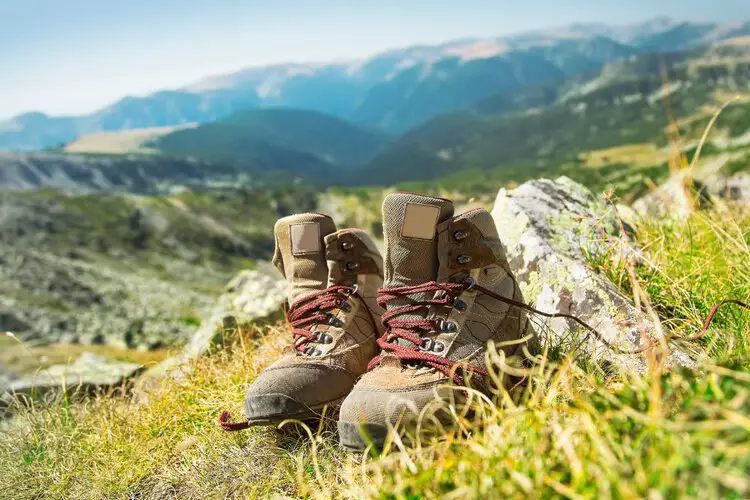
When drying your boots on the trail, it is crucial to choose the right location. Look for a dry and well-ventilated area, such as a sunny spot or near a fire.
Avoid drying your boots inside a tent or other enclosed spaces, as this can increase humidity and prevent your boots from drying completely.
3. Change To Other Boots

If you are on a long hike, it is a good idea to bring an extra pair of hiking boots or shoes. This will allow you to change your boots when needed, so one pair can dry while you wear the other.
- Waterproof membrane seals out water and lets moisture escape
- Pigskin leather and mesh upper
- Metal hook traditional lace closure
Last update on 2023-11-10 / Affiliate links / Images from Amazon Product Advertising API
If you do not have an extra pair of boots, you can remove your boots and let them air dry while you rest. This will help prevent blisters and other foot problems.
4. Check for the damage on wet hiking boots

When your hiking boots get wet, they can become more susceptible to minor damage, such as scuffs, scratches, and tears.
This is because the leather and other materials that make up your boots can become softer and more pliable when they are wet, making them more prone to damage.
Repairing minor damage to your boots as soon as possible can help prevent them from degrading quality over time and extend their lifespan.nMor over, it can help them look and feel better.
Big notes
When it comes to caring for your hiking boots, knowing what to do when they get wet is only half the battle.
The other half is to ensure that they stay in good condition and ready for your next adventure.
In this section, we’ll cover a few important notes to keep in mind when storing and drying your wet hiking boots.
Store Your Boots Properly

When you are not using your hiking boots, it is important to store them properly. This will help prevent them from becoming damp and musty.
You should store your boots in a cool, dry place, away from direct sunlight.
It is also a good idea to remove the insoles and let them air out. Putting boot trees in your hiking boots will keep their inside stay dry and have a pleasant smell.
- WHAT’S IN THE BOX: This listing is for 1 Boot Stretcher (NOT a pair) and 3 Metal Spot Stretching...
- PREMIUM MATERIALS: The FootFitter Heavy Duty Premium Professional Boot Stretcher is constructed with...
- SPOT STRETCHING PLUGS: Along with the SINGLE Boot Stretcher, we’ve included 3 attachable Metal...
Last update on 2023-11-10 / Affiliate links / Images from Amazon Product Advertising API
Do Not Dry Your Boots with Direct Heat
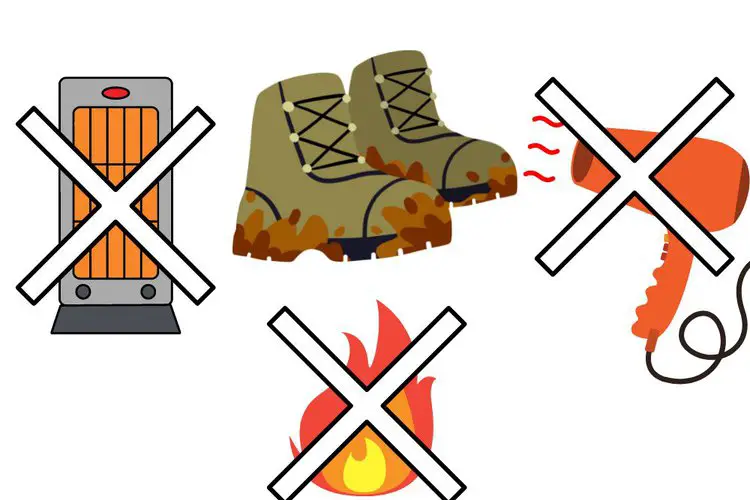
While it is important to dry your hiking boots, it is essential not to use direct heat sources such as heaters, hairdryers, or open flames.
Direct heat can cause your boots to shrink, warp, or crack, leading to irreversible damage. Always choose indirect heat sources that are gentle on your hiking boots.
Use leather conditioner

When your leather hiking boots get wet, the natural oils and waxes that protect and moisturize the leather can be stripped away. This can cause the leather to become stiff, dry, and even crack over time.
By using a leather conditioner, you can restore these oils and waxes, keeping the leather supple and hydrated.
- PREMIUM LEATHER CONDITIONER SINCE 1882: Bickmore Bick 4 Leather Conditioner cleans, polishes, and...
- WILL NOT DARKEN YOUR LEATHER: Unlike most leather conditioners, Bick 4 Leather Conditioner will NOT...
- COMPLETELY WAX FREE: Unlike other brands, Bick 4 is a completely wax-free product. This ensures that...
Last update on 2023-11-10 / Affiliate links / Images from Amazon Product Advertising API
What should I do if I want to continue the trip while my hiking boots are still wet?
If your hiking boots get wet on the trail and you don’t have a spare pair of dry boots to wear, there are a few things you can do to continue your hike in relative comfort:
Change into dry socks
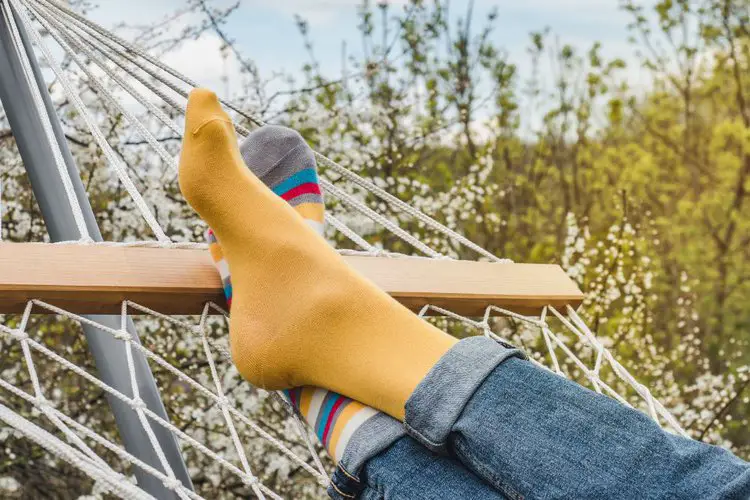
Even if your boots are wet, changing into a fresh pair of dry socks can help keep your feet warm and prevent blisters. Be sure to bring along extra socks on your hike in case you need them.
- Soft Breathable Moisture Control Fibers
- Arch Compression Support and Stability
- Ventilation Channels Enhance Air Flow
Last update on 2023-11-11 / Affiliate links / Images from Amazon Product Advertising API
Wrap your feet in plastic bags
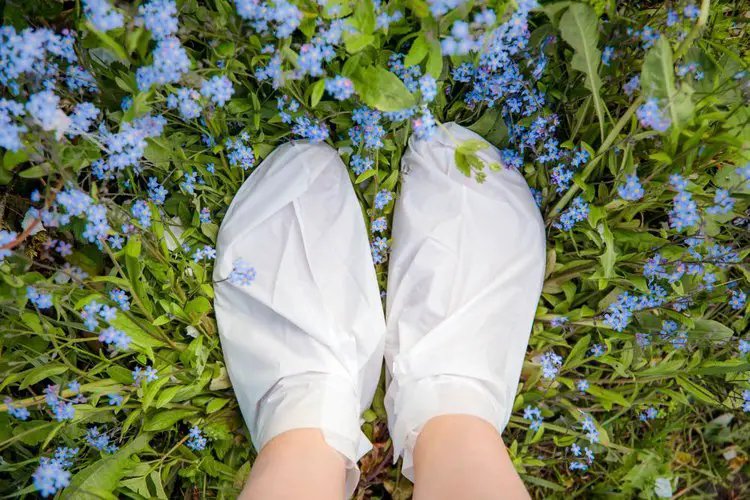
If you don’t have spare socks, wrapping your feet in plastic bags can help keep them dry and protected. Look for plastic bags that are large enough to fit over your socks and up to your ankle.
Wear sandals or water shoes
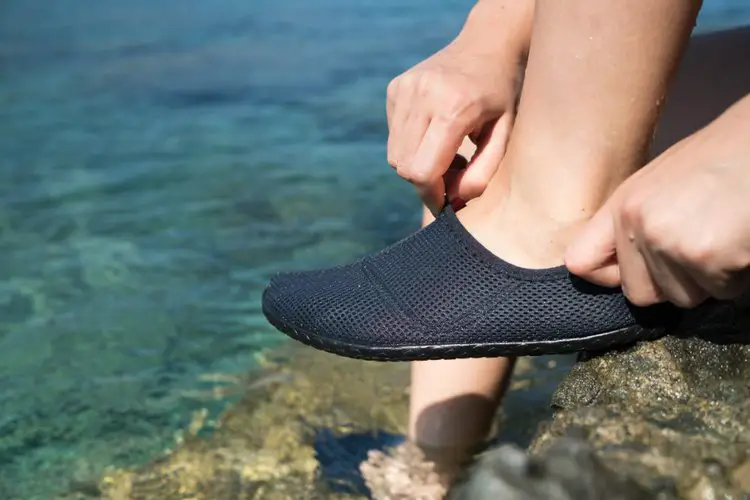
You can switch to a pair of sandals or water shoes until your hiking boots dry out. Just be sure to choose a pair with good traction to avoid slipping on wet rocks or trails.
- Recommended 1: CONVENIENCE - Smooth neck design prevents chafing when wearing our water shoes. It is...
- Recommended 2: COMFORTABLE FIT -- Breathable and smooth fabrics with fine stretch on uppers. Like...
- Recommended 3: RUBBER OUTSOLE & FOOT SAFETY -- Wearable and top-quality rubber sole, which protects...
Last update on 2023-11-10 / Affiliate links / Images from Amazon Product Advertising API
Conclusion
In conclusion, wet hiking boots can be a challenge, but with the right care and maintenance, you can keep your boots in top shape and prevent foot problems.
Remember to dry your boots as soon as possible, bring an extra pair of hiking boots on long hikes to change when needed. And check for any damage on the boots.
After that, don’t forget to give them good care and store them properly.
By following these tips, you can enjoy a safe and comfortable hiking experience.

